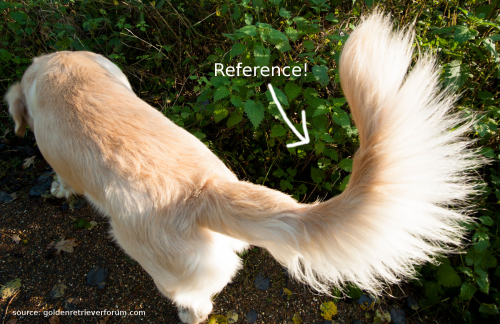AI-Generated Content
This article has been created using advanced AI technology to provide you with informative and engaging content.
AI-Curated Resources:
Sometimes, it feels like we are simply swamped with information, doesn't it? Data streams flow past us at a pretty fast pace, whether it's details about flights coming and going, or perhaps the constant chatter from a computer system. It can feel like trying to catch a single drop in a flowing river. So, the idea of "tail FL fishing" comes into play, offering a way to make sense of all that moving information, to pick out the important bits from the rest of the flow.
This way of looking at things helps us focus on what's happening right now, or what just happened. Instead of sifting through everything from the very beginning, which can take a very long time, we can look at the most recent parts. It's about being smart with our attention, you know, sort of like waiting at the end of a stream to see what floats by that truly matters. That, in a way, is what "tail FL fishing" is about.
We see this approach show up in many places, from keeping an eye on how computer programs are running to checking on the comings and goings at a busy place like an airport. It’s about getting the key details without getting lost in the sheer volume of stuff. This kind of focused looking helps us stay on top of things, which is quite useful for anyone trying to make sense of large amounts of ongoing information.
Table of Contents
- What Does "Tailing" Information Really Mean?
- How does "tail fl fishing" help with data streams?
- Focusing on the End of Things
- What can we learn from the "tail" of a file?
- Spotting Key Details
- Is "tail fl fishing" useful for real-time updates?
- Practical Applications
- Where might "tail fl fishing" come in handy?
- Understanding the Flow of "tail fl fishing" Data
What Does "Tailing" Information Really Mean?
When we talk about "tailing" information, it's a bit like observing the very last part of something that is continuously happening. Think about a long list of events, like the records a computer keeps about what it's doing. These records, or "log files" as they are often called, can grow very, very large. If you wanted to see what was happening right now, or what just happened a moment ago, looking at the beginning of that file wouldn't make much sense, would it? You'd have to scroll through ages of old information.
So, the idea of "tailing" lets us skip all that old stuff and just look at the newest additions. It's a way to keep an eye on things as they unfold. This is particularly handy when you are dealing with information that updates constantly. You want to see the fresh details, not the ones from yesterday or the day before. It helps keep your focus on the present, which is often where the most important changes are taking place, too.
For instance, if you are keeping tabs on a system that processes a lot of activity, like an airport managing flights, you'd want to know about the latest departures and arrivals. You wouldn't typically need to see every flight that has ever landed there since the airport opened. That would be, you know, a lot of information to sort through. "Tailing" lets you just see the immediate activity, which is quite helpful for staying current.
- How Many Ex Nba Players Are Jehovah Witnesses
- Spiderman Sophie Rains Video Adventure Unveiled
- Nba Players That Are Jehovah Witnesses
- Rick Hoffman Wife
How does "tail fl fishing" help with data streams?
The concept of "tail FL fishing" helps us make sense of these ongoing streams of information by giving us a clear point of focus. Instead of trying to take in everything at once, we narrow our view to the most recent additions. This is especially true when you are dealing with what we call "file lines" or "flight logs." Imagine trying to find a specific piece of information in a log file that's bigger than two gigabytes. That's a truly huge amount of text, isn't it?
If you just wanted to see, say, lines X through Y, trying to "cat" the whole file, which means showing all of it, would take a very long time and fill your screen with far more than you need. "Tail FL fishing" suggests a method where you can combine tools, perhaps by sending the output of one command into another. For example, you might pipe the output of a command that gives you the first part of a file into a command that gives you the last part, effectively letting you pick out a middle section. This makes the task much more manageable, allowing you to "fish" for just the lines you care about.
It's about being efficient with how you look at data. You don't want to waste time sifting through irrelevant information when you are looking for something specific. This approach lets you set up your view so that only the information you are interested in appears. So, if you are looking for specific messages in a stream of text, this method helps you zero in on them, which is a big help.
Focusing on the End of Things
Focusing on the end of things, particularly with continuous information, is a very practical way to stay informed without getting bogged down. When you have a file that's constantly being updated, like a system log, the most current happenings are always at the very end. It's like watching a news ticker; you want to see the latest headlines, not the ones from yesterday. This kind of observation is really about paying attention to the present moment, as it unfolds.
A tool that helps with this, for example, can simply listen for changes to a file. If new lines are added, it shows them to you right away. This means you don't have to keep opening and closing the file to see if anything new has appeared. It just stays open and shows you the fresh content as it comes in. This sort of continuous observation is quite handy for keeping tabs on live systems or processes, you know.
However, there's a small detail to keep in mind. If the file you are watching gets removed and then a new one with the same name gets created, the tool might get a bit confused. That's because, even though the name is the same, the underlying identification for the file changes. It's like having a new book with the same title as an old one; it's a different book entirely. This means you might need to restart your observation to keep seeing the new information, which is something to be aware of.
What can we learn from the "tail" of a file?
From the "tail" of a file, especially with "tail FL fishing," we can learn a lot about what's happening right now. We can see error messages as they appear, or confirm that a process is running smoothly. It's like having a window into the live operation of a system. For instance, if you are running a server and you want to know if everything is going well, looking at the end of its log file will tell you a lot more than looking at old entries from hours ago. You're getting the most recent feedback, which is pretty useful.
We can also set up our view to highlight certain kinds of information. Imagine you are looking at a stream of messages, and some are just general "info" while others are "severe." You could, for example, have the "severe" messages show up in a bright color, like red, so they stand out right away. The "info" messages could appear in a different color, like green. This makes it much easier to quickly spot what needs your immediate attention, which is a smart way to manage your focus.
This ability to customize how we see the information means we can tailor our "tail FL fishing" to what we are specifically looking for. We're not just passively watching; we're actively seeking out patterns or particular types of entries. This is quite helpful when you are trying to troubleshoot a problem or just monitor the health of a system. You can make the important bits jump out at you, which saves a lot of time and effort, you know.
Spotting Key Details
Spotting key details, especially when information is coming at you quickly, is a skill that "tail FL fishing" really helps to develop. It's about being able to pick out the one or two things that truly matter from a much larger flow. Think about the information that comes from a busy place like Adelaide Airport. There are details about flights arriving, flights departing, changes to gates, and maybe even announcements about transport options like shuttle buses, taxis, or rental cars. All this information is constantly moving.
If you were trying to find out if your specific flight was delayed, you wouldn't want to read through every single piece of information about every flight for the whole day. You'd want to focus on the latest updates related to your flight. This is where the idea of looking at the "tail" of the information stream comes in. You are looking at the most recent additions, hoping to "fish" out the specific detail you need. It helps you cut through the noise, you see.
This approach is also about understanding that not all information has the same level of importance at all times. Some details are just general updates, while others might signal something that requires immediate action. By focusing on the end of the stream, and perhaps even coloring or filtering the output, you train yourself to quickly identify what's critical. It's a way of making the data work for you, rather than you working for the data, which is quite a difference.
Is "tail fl fishing" useful for real-time updates?
Yes, "tail FL fishing" is truly useful for real-time updates, perhaps more so than for anything else. When information is changing by the second, like with live system logs or flight status boards, you need a way to see those changes as they happen. You don't want to be looking at outdated information when you need to make a decision right now. This method lets you watch the stream as it unfolds, which is very helpful.
Consider the example of observing log files. A command can be set up to simply "listen" for new lines being added to a file. As soon as a new event is recorded, it pops up on your screen. This means you get immediate feedback on what a system is doing. If something goes wrong, you'll see the error message as it's written to the log, not five minutes later when you decide to manually check. This kind of instant feedback is pretty important for keeping things running smoothly.
It's also about having a constant view without having to do anything extra. You set it up once, and it just keeps showing you the latest. This hands-off approach to monitoring is a big benefit for anyone who needs to keep an eye on ongoing processes. It frees you up to do other things, knowing that if something important happens, it will appear right in front of you. This makes "tail FL fishing" a really practical way to stay on top of live information, you know.
Practical Applications
The practical applications of "tail FL fishing" are quite broad, extending to many areas where large amounts of information are generated continuously. Think about any situation where you need to monitor ongoing activity without getting swamped by historical data. It's about getting the most recent snapshot of what's happening, which is often the most important part. This approach helps us stay nimble and responsive, which is always a good thing.
For example, if you are looking at how people are traveling to and from Adelaide Airport, you might be interested in the latest trends in shuttle bus usage versus taxi rides. You wouldn't need to look at every single trip taken since the airport opened. You'd want to see the most recent patterns, the ones that are developing right now. "Tail FL fishing" helps you focus on that current behavior, giving you insights into what's happening on the ground, so.
Another example involves keeping an eye on server performance. If a server starts to have issues, it usually writes messages about those problems to a log file. By "tailing" that log file, you can see the error messages as they occur, allowing you to react quickly. This proactive approach to problem-solving is a direct benefit of being able to focus on the very end of an information stream. It's about catching issues as they arise, rather than discovering them much later, which can be a real headache.
Where might "tail fl fishing" come in handy?
"Tail FL fishing" might come in handy in quite a few situations where you are dealing with streams of information. It's particularly useful when you need to observe how things are progressing in real-time. For instance, if you're working with a system that creates many records, and you only care about the very latest ones, this approach helps you zero in on them. You avoid the need to process all the older stuff, which saves a lot of effort, you know.
Consider a situation where you are monitoring a website. You might have a log file that records every visit, every error, and every action taken by users. This file can grow incredibly quickly. If you want to see if someone just tried to log in incorrectly, or if a new page request caused a problem, you wouldn't look at the beginning of the log. You'd look at the very end, where the most recent entries are. This is a clear case where "tail FL fishing" becomes a very practical tool, allowing you to catch those specific events as they happen.
Another place it's useful is when you are trying to understand how specific parts of a large system are interacting. Maybe you are looking for messages that indicate a connection was made, or that a certain process finished its task. By focusing on the "tail" of the system's output, you can "fish" for these specific messages. This helps you confirm that things are working as expected, or quickly identify if something has gone awry. It's about being able to filter out the noise and focus on the signals, which is pretty important.
Understanding the Flow of "tail fl fishing" Data
Understanding the flow of "tail FL fishing" data means grasping how information moves and how we can best intercept the parts we need. It's about recognizing that some data is static, but much of what we deal with in modern systems is dynamic, always changing and growing. When we talk about "tailing" a file, we are essentially positioning ourselves at the end of that growing line of information, ready to catch anything new that appears, you know.
This is different from simply opening a file and reading it from start to finish. That approach is good for looking at fixed information, but not for something that's constantly being written to. With "tail FL fishing," we're interested in the ongoing additions, the new bits of knowledge that are just being created. It's like watching a conveyor belt; you're focused on the items that are just coming into view, not the ones that have already passed by.
Even when we think about information related to places like Adelaide Airport, the data flow is continuous. Flight statuses update, transport availability changes, and new travel advice might appear. While some of this is presented in a user-friendly way, the raw information often comes in streams that can be "tailed." Understanding this continuous flow and how to observe its end allows us to keep up with the very latest developments, making "tail FL fishing" a way to stay informed and responsive to an ever-moving stream of facts.
AI-Enhanced Visual Content


